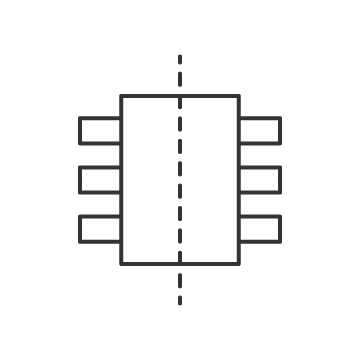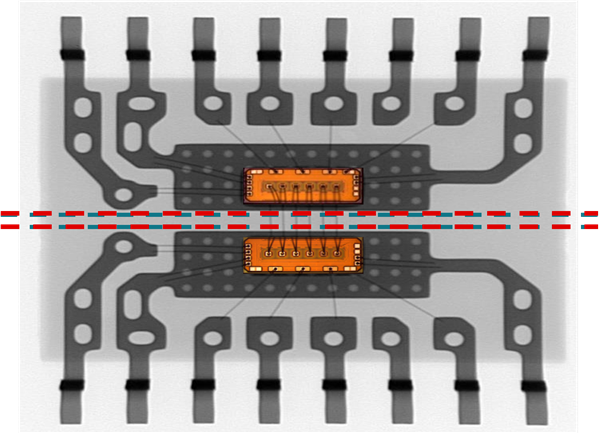SSZT158 June 2021 ISO1432 , ISOW1044 , ISOW1412 , ISOW1432 , ISOW7740 , ISOW7741 , ISOW7742 , ISOW7743 , ISOW7744
A high-voltage circuit design requires isolation in order to protect human operators, enable communication to lower-voltage circuitry and eliminate unwanted noise within the system. Digital isolators provide a simple and reliable way to achieve high-voltage isolated communication in industrial and automotive applications.
Maintaining the integrity of a signal across an isolation barrier requires the isolation of all coupling paths between the primary and secondary sides of the circuit, including the power supplies. While a digital isolator’s secondary side typically requires little power, system designers often include an additional power allowance to supply power for multiple devices.
In this article, I’ll share common questions for isolating signal and power in a design, and give a brief overview of available discrete and integrated options.
| Industry-leading radiated emission performance | |

|
View our digital isolator, isolated CAN transceiver and isolated RS-485 transceivers with integrated DC/DC converters that deliver the industry’s lowest radiated emissions while saving board space. |
Question No. 1: Why Isolate Power for Digital Isolators?
The internal architecture of a digital isolator consists of two separate digital integrated circuits (ICs) on a split leadframe with a high-voltage isolation dielectric barrier between them, as shown in Figure 1. Each IC requires a separate power supply and ground for both the primary and secondary sides of the device, with no physical connection between them. This requirement is independent of whether a device supports basic or reinforced isolation, and applies to digital isolators as well as isolated devices with integrated interfaces.
 Figure 1 The Internal Architecture of a Digital Isolator Includes a Split Leadframe and Requires Separate Primary and Secondary Supplies
Figure 1 The Internal Architecture of a Digital Isolator Includes a Split Leadframe and Requires Separate Primary and Secondary SuppliesQuestion No. 2: What Are the Power Requirements for a Digital Isolator?
Before selecting a power topology for a digital isolator solution, it is important to determine the basic power requirements of the supply, including the input voltage range, output voltage, output power needed for the secondary side and the number of output rails. Additional considerations for isolated power solutions compared to nonisolated power solutions include system insulation ratings and required creepage and clearance distances, along with electromagnetic compatibility requirements such as electrostatic discharge and the emissions performance of the system. Industry end-equipment standards define many of these requirements. To learn more about insulation ratings and creepage and clearance for isolated systems, watch the TI Precision Labs Isolation video series.
The input and output signal voltages of a digital isolator often depend on their applied power-supply voltage, and usually have a direct relationship to the supply voltage (VCC) on the secondary side. Before finalizing supply input and output requirements, I recommend carefully reviewing the digital isolator data sheet for power-supply requirements. It’s also a good idea to optimize the digital isolator for the logic levels of interfacing components. For example, when powering a digital isolator with 5 V that interfaces to a microcontroller, select signals that are also operating at or close to 5-V logic levels on the secondary side.
Question No. 3: Does a Secondary-side Supply Work for Isolated Power?
In some cases, there may already be two separate power-supply rails available within the system for primary- and secondary-side power, as long as you meet the minimal requirements of the isolator logic. These include power-supply voltage levels matching the input and output signal levels, each offering a separate ground. While the use of existing secondary supplies is an option, noise coupling and supply regulation often become an issue. Designers often elect to design isolated supplies that are optimized for logic and system noise performance.
Question No. 4: What Solutions Are Available for Isolating Power Supplies?
Many options are available when designing an isolated power supply for digitally isolated circuits. Power solutions for digital isolators include flyback, H-bridge inductor-inductor-capacitor, push-pull, and integrated isolated data and power solutions.
Integrated isolated data and power solutions such as the ISOW7741 digital isolator with power, the ISOW1412 and ISOW1432 isolated RS-485 transceivers with power or the ISOW1044 Controller Area Network transceiver with power feature an integrated DC/DC converter. These devices are designed to meet Comité International Spécial des Perturbations Radioélectriques (CIPSR) 32 Class B limits with a significantly smaller solution size than discretely designed alternatives. The benefit of eliminating the need for a transformer on the board, the reduction in board size and improved ease of certifications are often considered worthwhile trade-offs to achieve a high-performance design in the smallest possible footprint.
So while discrete solutions may provide higher efficiency and lower radiated emissions in some cases, the space-saving and certification-simplifying benefits ultimately enable a faster time to market.
To learn more about the benefits of these devices, read the application brief, “How to meet CISPR 32 radiated emissions limits with ISOW7741.”